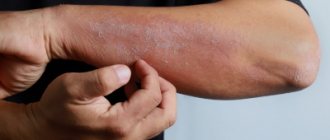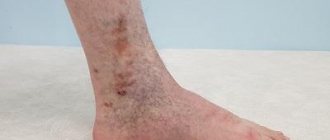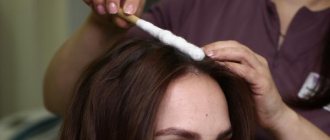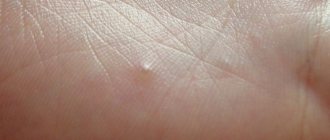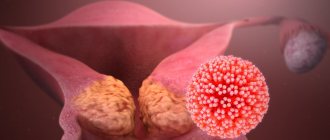April 28, 2021
Coin-shaped eczema (nummular eczema) is one of the types of chronic itchy dermatitis and microbial eczema, accounting for about 10% of the total number of dermatoses. A clear sign of the disease are large, round plaques with clear boundaries that rise above healthy skin. In children, coin-shaped eczema practically does not occur; among adults, it is approximately equally common, but most often occurs at the age of 30-50 years.
Causes of eczema
Among the main causes of this disease, doctors call a violation of the barrier function, when the outer layer of the epidermis fails to protect the skin from the aggressive effects of various external factors. On the other hand, through a broken barrier, the body loses a large amount of water, which leads to dehydration and even greater skin vulnerability.
In a large number of cases, the tendency to eczema is hereditary. Depending on the type of eczema, provoking factors may include:
- Aggressive skin care: washing with soap, using harsh cosmetics with sulfates, excessively long water procedures and hot water. All this leads to the washing away of the protective sebaceous film from the surface of the epidermis; accordingly, the surface of the body loses water and protection from external influences.
- Dry air, stay in a hot climate, bath.
- Allergens of various origins: food, pollen, mold, dander and animal hair.
- Contact allergens: nickel, latex,
- Stress.
Ointments used for microbial eczema
To eliminate pain, patients are prescribed ointments:
- Removing swelling and itching (clobetasol, advantan);
- Which reduce the inflammatory process (triamcinolone, prednisolone);
- Having anti-allergenic, hormonal qualities (hydrocortisone, acriderm);
- Enhancing healing and enzymatic processes (dexpanthenol, ichthyol);
- Necessary for the treatment of hard crusts (fucorcin, boron, sulfur, zinc mixtures);
- Containing antibiotics (tetracycline, erythromycin, etc.).
Types of eczema
Eczema is manifested by skin rashes and a number of other general symptoms, but according to the origin and characteristics of the course, several types of this disease can be distinguished:
- Atopic dermatitis affects adults and children, and is associated with dehydration of the skin, which cannot withstand the harmful effects of the environment and allergens entering the body. In young children, symptoms occur on the cheeks, in older children - in the bends of the elbows and knees, on the neck, but in general the location can be anywhere.
- Contact dermatitis is a reaction to local exposure to an allergen or irritant. It occurs precisely at the point of contact. Contact allergens include some metals (nickel, cobalt), latex, the juice of certain plants, as well as many components of household chemicals and cosmetics.
- Seborrheic dermatitis is also associated with dysregulation of the sebaceous glands, and affects the scalp, less often the forehead, the area behind the ears, the wings of the nose and the upper back. Appears as fatty, dense crusts or scales, and in infants the condition is known as gneiss.
How to cure coin-shaped eczema
Treatment of coin-shaped eczema is complex. It is necessary to take measures against the underlying disease, which is associated with a source of chronic infection, to normalize the functioning of the digestive, endocrine and nervous systems. Antibiotics help with coin-shaped eczema, but often do not lead to remission, which is what needs to be achieved with such a disease.
Antibacterial drugs are often resorted to if a secondary infection has occurred. In other cases, the basis of treatment is:
- sedatives, tranquilizers, antidepressants, antipsychotics, herbal teas - to relieve stress;
- desensitizing drugs - to eliminate allergies;
- enzymes - to improve digestion.
For external treatment of eczema, hormonal ointments are used, which give quick results. But before prescribing them, they resort to non-hormonal agents, which include zinc-based ointments and creams. For itching, topical steroids show good results. Physiotherapy procedures have a beneficial effect on the skin: ultraphonophoresis, acupuncture, UHF therapy, ozone therapy, therapeutic mud, paraffin applications.
It is equally important to follow a diet that excludes potential allergens: citrus fruits, marinades and pickles, fried and smoked foods, red fruits, seafood, nuts, honey, chocolate. The basis of the diet should include cereals, herbs, vegetables, and lactic acid drinks.
Is eczema contagious?
Eczema has skin symptoms such as rashes and peeling that are noticeable to others, which is why people often wonder if the condition is transferable to others.
This question of whether eczema is contagious is very important, since the appearance of the skin is unpleasant to contemplate and often repels others, which leads to stigmatization, social isolation and various psychological problems, from neurosis to depression. In many countries, the psychological aspects of this disease are studied very deeply because it greatly affects the quality of life. Both the patient himself and loved ones must have a good understanding of the nature of the disease, be confident in their own safety, and that eczema can be cured.
Microbial eczema in pregnant women
Often pregnant women can suffer from dermatosis. Their body undergoes certain changes. The immune system is weakened and hormonal levels are disrupted. There are no particular risks for the fetus or woman. But unpleasant sensations such as itching and a constant desire to scratch create some discomfort. If painful symptoms occur, you should immediately visit a dermatologist.
Methods for diagnosing skin diseases:
- Diagnosis of skin diseases
- Diagnosis of skin diseases at home
- Diagnosis of allergic skin diseases
- Diagnosis of bacterial skin diseases
- Diagnosis of viral skin diseases
- Diagnosis of hair diseases
- Diagnosis of nail diseases
- Diagnosis of skin tumors
- Blisters on the skin
- Dermatoscopy
- Demodex tests
- Diagnosis of sexually transmitted infections
- Mushroom tests
- Skin scraping
Is eczema inherited from person to person?
Research in recent years has shed light on the cause and mechanisms of development of the disease. Thus, its hereditary nature has been deeply studied. Observations of identical twins have shown that if one of them has this problem, there is a greater than 80 percent chance that the other will develop it too. This confirms that eczema is inherited. A number of genes have been discovered that are found in patients, but often various combinations of genes are to blame for the disease, as well as the interaction of genetic predisposition with environmental conditions and other external factors. There is no single mutation that is present in all patients and leads to pathology.
The CARD11 gene encodes a protein that plays a key role in the signal transmission mechanism in the receptors of T-lymphocytes, immune cells, and when mutated, these cells can no longer work correctly. Mutation of this gene occurs in patients with atopic dermatitis. To understand the mechanisms through which changes in the CARD11 protein lead to skin damage, the scientists conducted several experiments on cell cultures and also observed patients with a family history of dermatitis. In each of the four families, mutations were detected in different parts of the CARD11 gene, but the disturbances in the functioning of the receptors were very similar to each other. The number of T-lymphocytes remains the same, but these cells function incorrectly and react incorrectly when foreign bacteria and fungi enter the body. This leads to decreased immunity and frequent infections. This probably reduces the barrier function of the skin, which is why it is damaged. In this separate, hereditary form of atopic dermatitis, a tendency to bacterial and fungal diseases is combined with a rash and dryness of the body. The autosomal dominant pattern of inheritance characteristic of this gene means that the disease appears in every generation, regardless of gender, and one copy of the mutant DNA is enough to cause symptoms of eczema.
A mutation in the FLG gene occurs in 30% of patients with atopy. This gene contains the profilaggrin protein, which is necessary for the formation of the correct structure of the outermost layer of the epithelium. Proteins formed from profilaggrin help create a strong barrier that keeps water inside and prevents foreign substances such as toxins, bacteria and allergens from penetrating the skin. These proteins are also natural moisturizing factors that help maintain the elasticity of the outer layer of the skin. Changes in the FLG gene can cause damage and rashes. Not all carriers of this mutation develop atopic dermatitis, however, when exposed to any external triggering factors, the risk increases significantly. Research shows that this exposure triggers epigenetic changes in DNA. In this case, the DNA sequence itself remains the same, but the regulatory mechanisms associated with this gene change. The activity of the gene changes, this affects the synthesis of the proteins encoded in it. In predisposed people, this provokes allergic reactions. The FLG mutation is also inherited in an autosomal dominant manner, but due to epigenetic influences, not all carriers become affected.
Microbial eczema in children
Infants aged two months to six months, as well as children and teenagers, can develop microbial eczema. Painful signs may appear:
- For hereditary reasons;
- Due to weak immunity;
- For diabetes mellitus;
- In children with a disrupted endocrine system;
- Against the background of ongoing allergic diseases.
The above reasons are associated with hormonal fluctuations. A baby who feeds on mother's milk is not afraid of this disease. Those who are healthy, kept clean, do not suffer from dermatosis.
Does eczema spread through contact with a sick person?
Through direct contact, diseases that belong to the group of infectious diseases are transmitted. These diseases are caused by bacteria, viruses or fungi. The transfer of these microorganisms to another person upon contact, through household objects, with drops of saliva during coughing, leads to the spread of pathology. This property is called contagiousness. The vast majority of types of eczema are not infectious, which means they are not contagious. Pathology cannot pass from sick to healthy, so it doesn’t matter whether you touch the affected skin or use a shared towel, eczema cannot appear from this.
In rare cases, when the affected skin becomes infected with bacteria, it can spread through contact with another person, and if they also have eczema, there is a possibility of infection. So, if you already have this skin condition, you may get the organism from someone else and your eczema will become more complicated by infection. However, this is a very unlikely scenario, and bacterial inflammation is more likely to occur if personal hygiene is not followed.
Eczema and sex
Infections caused by viruses, bacteria or protozoa are transmitted sexually. Eczema is not an infection; this skin disease does not belong to the group of sexually transmitted diseases. Therefore, it is impossible to catch this condition from your partner during sex.
If you have symptoms similar to eczema after sexual intercourse, and your partner has the same symptoms, you should immediately consult a doctor. This means that the rash is not caused by eczema, but by an infection, and if you do not get a diagnosis and treatment in time, there is a high risk of complications associated with both sexual function and infertility, and with the general well-being of the body. Thus, the herpes simplex virus causes a rash that can be confused with eczema. However, this disease must be treated with antiviral drugs. Without treatment, it brings a lot of unpleasant sensations, and if the body weakens, it can lead to a severe form of encephalitis. Herpes is also dangerous during pregnancy, for the fetus (unlike eczema).
Eczema and blood transfusion
When asked whether eczema can be contracted through a blood transfusion, doctors have a clear answer. No, this disease is not transmitted from person to person through blood. It is known that a number of genes may be responsible for the symptoms of eczema. When a blood transfusion occurs, blood cells that carry the genetic material of another person enter the body. Therefore, doubts may arise: whether the eczema gene will be passed on in this way. The fact is that blood cells are mature and formed. They do not participate in further division and are not sources for subsequent generations of red and white blood cells. They serve for a certain time, performing their functions, and then are disposed of in the spleen. New cells are supplied by the bone marrow. When a person requires a transfusion, his own bone marrow does not have time to grow the required number of cells (for example, during bleeding). Then he is helped by injecting the blood of another person. Even if these new cells have a hereditary defect, they will work out before causing symptoms of atopic dermatitis, and they will be replaced by healthy own cells that the bone marrow has grown in a calm environment.
How to prevent the disease
In order not to encounter unpleasant symptoms of eczema in the future or to weaken the course of an existing disease, you must follow certain recommendations:
Features of eczema prevention
- Maintain hygiene of your body and facial skin. Wash your face every day and take a warm shower, use special products (choose a product specifically for your skin type), wipe dry with a clean towel;
- promptly treat all dermatological diseases that may cause eczema. The same can be said for varicose veins;
- pay special attention to swelling or scabies - these are warning signs;
- Before each meal, as well as after visiting hospitals, shops and other public places, be sure to wash your hands with soap;
- if even minor ulcers or scratches appear, use iodine to treat the affected skin;
- Women are not recommended to wear nylon tights or stockings frequently. This material does not allow air to pass through, so the skin cannot breathe and function normally;
- Change your wash brush and washcloth regularly, as various bacteria can accumulate on them. It is recommended to replace it at least once a month.
Prevention of eczema
To prevent eczema during pregnancy, experts recommend following a special drinking regime. This is due to the fact that allergens can enter the placenta along with blood, which poses a threat to the health of the unborn child. You also need to monitor your diet and take vitamin complexes containing vitamins A and B. The combination of all these measures will prevent the occurrence of eczema and other skin pathologies.
Treatment of eczema
In treatment, a number of drugs are used that affect the mechanism of the disease and eliminate symptoms.
- Glucocorticoids. These hormonal drugs are prescribed locally in the form of ointments or creams. They regulate the functioning of immune cells, thus eliminating all symptoms of inflammation. They are effective against rashes, itching, and redness. Depending on the severity of the process, prevalence and localization, hormones of varying strengths are prescribed.
- Calcineurin inhibitors act similarly to hormonal agents, blocking the process of inflammation, but are free from the side effects of glucocorticoids and are better tolerated.
- Antihistamine tablets are effective against itching.
- Combined nonspecific drugs are good for treating mild forms or in combination with specific therapy. This is a wide range of products that contain emollients, oils, antiseptics, substances that affect inflammation and regeneration.
Gene therapy is not used in the treatment of eczema, since there is no one specific gene that needs to be changed to get rid of this disease. At this stage of medical development, it is impossible to come up with a genetic technology that would help in the fight against dermatitis.
Calling a dermatologist to your home for eczema
Calling a doctor to your home depends on the form of the disease. The severity also plays a role. At home, the patient experiences psychological comfort. The doctor can find out all the signs in more detail and draw up a picture of the course of the disease. Prescribe drugs that will have a more powerful effect on the body.
There are cases when the disease is systemic in nature. This requires the participation of other specialists. Consultation with a nutritionist and allergist is necessary. The patient must be in a hospital. Undergo a full examination and course of therapeutic therapy.
What is a disease
Eczema is a chronic disease that affects the skin and is of neuro-allergic origin. It has an unpleasant appearance, accompanied by redness, swelling, serous vesicles, cracks and crusts on the skin.
The rash can be either wet or dry, and always causes severe painful itching. Both adults and children encounter it.
Modern medicine has not yet been able to establish the exact cause of the disease, but doctors have been able to identify many factors that provoke the development of eczema.
How to avoid worsening dermatitis in winter
In winter, exacerbation of dermatitis is common. Even healthy skin can have a hard time coping with temperature changes and dry indoor air. The following will help you get rid of the symptoms of the disease even in the frosty months:
- cold compresses,
- warm baths with oatmeal or baking soda,
- creams or ointments for the body with a high concentration of oils in the composition (apply the cream immediately after a bath or shower).
In winter, it is especially important to try not to irritate the skin, do not rub it with a towel, avoid scratches, and do not use cosmetics with fragrances (Fig. 4). When cleaning, be sure to wear gloves and goggles when using aerosol cleaners. In clothing, preference should be given to soft, natural fabrics, such as cotton. Thus, during the cold season, the daily routine should be even more gentle than usual.
Figure 4. How to care for skin with eczema in winter. Illustration: MedPortal
What to do if microbial eczema appears?
The formation of a weeping, purulent ulcer on the skin can cause serious concern for anyone. In this case, the main thing is not to panic, but to make an appointment with a dermatologist for an examination as soon as possible.
And the easiest way to do this is using the “Your Doctor” service, which provides data from most private clinics in Moscow. You can find out which of them you can call a dermatologist at home or simply make an appointment with him, and then make an appointment directly on the website.
Publication date: 2020-01-07
Answers to frequently asked questions to a dermatologist:
- Treatment of skin diseases
- Consultation with a dermatologist
- Prevention of skin diseases
- Dermatologist appointment
- Examination by a dermatologist
- Pediatric dermatologist
- Skin doctor
- Paid dermatologist
- How to prepare for an appointment with a dermatologist?
- How to get checked for skin diseases?
- What diseases does a dermatologist treat?
- What tests should be taken by a dermatologist?
- What diagnostics can a dermatologist perform in the clinic?
- Where to go with a skin disease?
- What symptoms should you consult a dermatologist for?
- What equipment does your clinic have for diagnosing skin diseases?
- How to call a dermatologist at home?
- What skin diseases are contagious?
- Help from a dermatologist in the clinic
- Dermatologist help at home
- How to make an appointment with a dermatologist?
This article is posted for educational purposes only and does not constitute scientific material or professional medical advice.
How to live with dermatitis
Atopic dermatitis in adults can become chronic, and then you will have to fight it all your life. There is no cure for eczema, but the good news is that the disease can be controlled by keeping symptoms to a minimum. To do this you need 18:
- know and exclude contacts with triggers that provoke inflammation,
- take good care of your skin,
- use medications prescribed by a specialist.
It is very important to individually select the type and form of the drug so that the therapy is effective and comfortable for the patient. This also applies to topical steroids. In addition, you need to constantly monitor the development of the disease and be under the supervision of a specialist. Long-term remission may be a reason to gradually discontinue medications or switch to small doses of the drug. If symptoms increase, the specialist will help adjust the treatment plan by selecting a new therapy.
Unfortunately, sometimes eczema is unpredictable. It can flare up suddenly, and sometimes it can be difficult to understand why it has returned. The cause of its manifestation may be stress, anxiety, climate change or the quality of tap water. Living with eczema, you always need to be on guard. But even if the disease makes itself felt at the most inopportune moment, you should not perceive it as a disaster. Since our emotional state is closely related to the manifestations of eczema, we can overcome the disease only by accepting our skin as it is. There is no need to hide dermatitis, it needs to be treated, and then the skin will definitely reciprocate the love shown.
Sources
- National Center for Health Statistics, National Health Interview Survey, 2014.
- National Eczema Association website. Eczema causes and triggers.
- Thomas N. Helm and all. What is the role of neomycin in the etiology of allergic contact dermatitis? Medscape. -2020
- Susana Vilaça and all. Simultaneous contact allergy to neomycin, bacitracin, polymyxin, and dexamethasone: An often unrecognized cause of allergic contact dermatitis in patients using topical antibiotics. Journal of the American Academy of Dermatology. -2012, -V. 6, -I. 4, -S. 1, -P. AB74. https://doi.org/10.1016/j.jaad.2011.11.316
- A. C. de Groot, A. Herxheimer. Isothiazolinone preservative: cause of a continuing epidemic of cosmetic dermatitis. Lancet. -1989. DOI: 10.1016/s0140-6736(89)91318-4
- Atopic Dermatitis 101 for Adults. National eczema association. -2017
- JI Silverberg and all. Symptoms and diagnosis of anxiety and depression in atopic dermatitis in US adults. British Journal of Dermatology. -2019. https://doi.org/10.1111/bjd.17683
- A. Wollenberg and all. Consensus-based European guidelines for treatment of atopic eczema (atopic dermatitis) in adults and children: part IJ Eur. Acad. Dermatol. Venereol. -2018. DOI: 10.1111/jdv.14891
- John Elflein. Global use of prescription topical treatments and phototherapy for eczema 2022. -2020
- C. Fookes. Topical Steroids. Drugs.com. -2018
- A. Roeder and all. Safety and efficacy of fluticasone propionate in the topical treatment of skin diseases. Skin Pharmacol. Physiol. -2005. DOI: 10.1159/000081680
- NHS. Topical corticosteroids
- Give Topical Steroids the Fingertip. National eczema association
- Instructions for the medical use of the drugs FeniVate cream RU P N012556/01 dated 07/15/2009 and FeniVate ointment RU P N012556/02 dated 07/16/2009.
- New, sales start in June 2022.
- Katsambas A.D., Lotti T.M. European treatment guidelines in dermatology. 2014, MEDpress-inform LLC, 3rd ed., trans. from English, 736 p.
- Ellie Choi and all. Efficacy of targeted education in reducing topical steroid phobia: A randomized clinical trial. Journal of the American Academy of Dermatology. -2020. -V. 83, -I. 6. -P. 1681-1687. https://doi.org/10.1016/j.jaad.2020.02.079
- NIAID. Eczema (Atopic Dermatitis) Treatment
